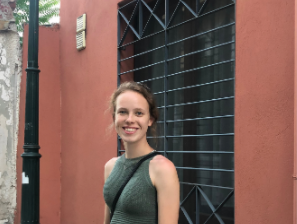Reif: Safe injection sites, syringe exchange programs should be more prominent
January 25, 2019
Life expectancy has historically been used as an indicator of a population’s health and development. While the United States has consistently rested in the top quarter of all countries in this regard, our life expectancy has decreased in two of the last three years. The decline from 78.7 years in 2017 to 78.6 years in 2018 may appear inconsequential, but put in context with our country’s drug abuse problem, it represents 70,000 more Americans who died from drug overdoses compared to the previous year. With such alarming statistics, each backed with a human life and no sign of significant improvement, we need to bolster effective programs already in place and look elsewhere for additional ways to help the victims of this crisis.
In 1996, Purdue Pharma, a privately-owned large pharmaceutical company, released OxyContin, a form of the painkiller oxycodone. The company’s administration assured patients and physicians that this was a safer alternative than other opioids to treat long-term pain and carried a low risk for addiction. The drug flooded the market, and with incessant advertisements, the number of painkiller prescriptions increased by eight million that year. Widespread use of such potent medications—including other opioids such as Percocet, codeine and Vicodin—led to misuse and addiction, catalyzing the opioid crisis.
In 2007, Purdue was charged with “misbranding” and minimizing the possibility of addiction with OxyContin. Yet 12 years later, over 130 people die every day from overdosing on an opioid. In Ohio, opioid overdose deaths have increased over 1,000 percent in the past 19 years; an increase felt in our city of Cleveland. Last fall, the MetroHealth System filed a lawsuit against Purdue Pharma in efforts to hold them accountable for the deaths of 727 lives in Cuyahoga County in 2017 and destruction they have helped cause. This is a start but not enough.
Circle Health Services, a free medical clinic just north of Case Western Reserve University’s campus, is one of the only places in Ohio to offer a syringe exchange program. In an effort to reduce HIV and Hepatitis C infections, drug users are given a clean needle for every used needle they exchange. Between 50,000 and 60,000 needles are safely exchanged each month. Not only have syringe exchange programs been scientifically proven to be safe and effective in reducing HIV contraction, they are also cost-effective. A New York Times analysis found that one dollar invested in such programs saves six dollars on costs associated with HIV. Greater access to such services across the city and state would save lives. Yet skepticism, fear and resistance run deep, causing these programs to be few and far between.
Even more contentious are safe injection sites (SIS): medically supervised facilities in which people living with substance abuse disorders can go to safely inject illicit drugs. Public officials from many cities, Cleveland included, are wary of the Federal Drug penalties that may accrue if SISs are opened, as they are currently illegal in the U.S. Only two cities in America—Philadelphia and Seattle—allow such facilities. Upon reporting the potential for the city’s SIS to save 75 lives a year, Eva Gladstein, deputy managing director of Philadelphia’s Health and Human Services, commented, “If any of those 75 people are a member of your family, you would, I think, agree that that’s something that’s desirable.”
The several people in Cuyahoga County who die every day from opioid overdoses are always someone—a mother, a brother, a friend or an uncle. They deserve to live, and SISs are a way to help ensure that.
In order to open the first SIS in North America, the city of Vancouver, British Columbia had to win a battle with the courts, and it is now in its 15th year of operation. The Canadian Supreme Court ruled that saving lives outweighed the laws prohibiting the use of illegal drugs. Since opening, the Canadian facility has supervised over 3.5 million injections and reacted to 6,000 overdoses. Even more beneficial, no one has ever died at the SIS facility.
If legalized in the U.S., an SIS is likely to see just as impressive results as Vancouver, British Columbia. Access to such a facility in Cleveland would mean a decrease in HIV infections and ambulance calls and a dramatic increase in lives saved.
Beth Zietlow-DeJesus, the director of external affairs, alcohol, drug addiction and mental health services board of Cuyahoga County, emphasized that “there are no substance use free communities in the U.S.” and that “substance use disorder does not discriminate based on age, race, socio-economic status or any other reason.” It is our responsibility as a community to take care of our brothers and sisters suffering from substance abuse disorders in and around our neighborhood.
With interest and support from the CWRU community and the greater Cleveland area, we could move Cleveland to be one of the 13 cities that strives to keep people safe as they work to overcome their disease.
Jordan Reif is a first-year student studying political science on the pre-med track. She likes to spend her time reading, saving the bees or innovating new ideas for her startup “Ned talks”—a discussion forum for those who are just not quite good enough to make it to TED.























